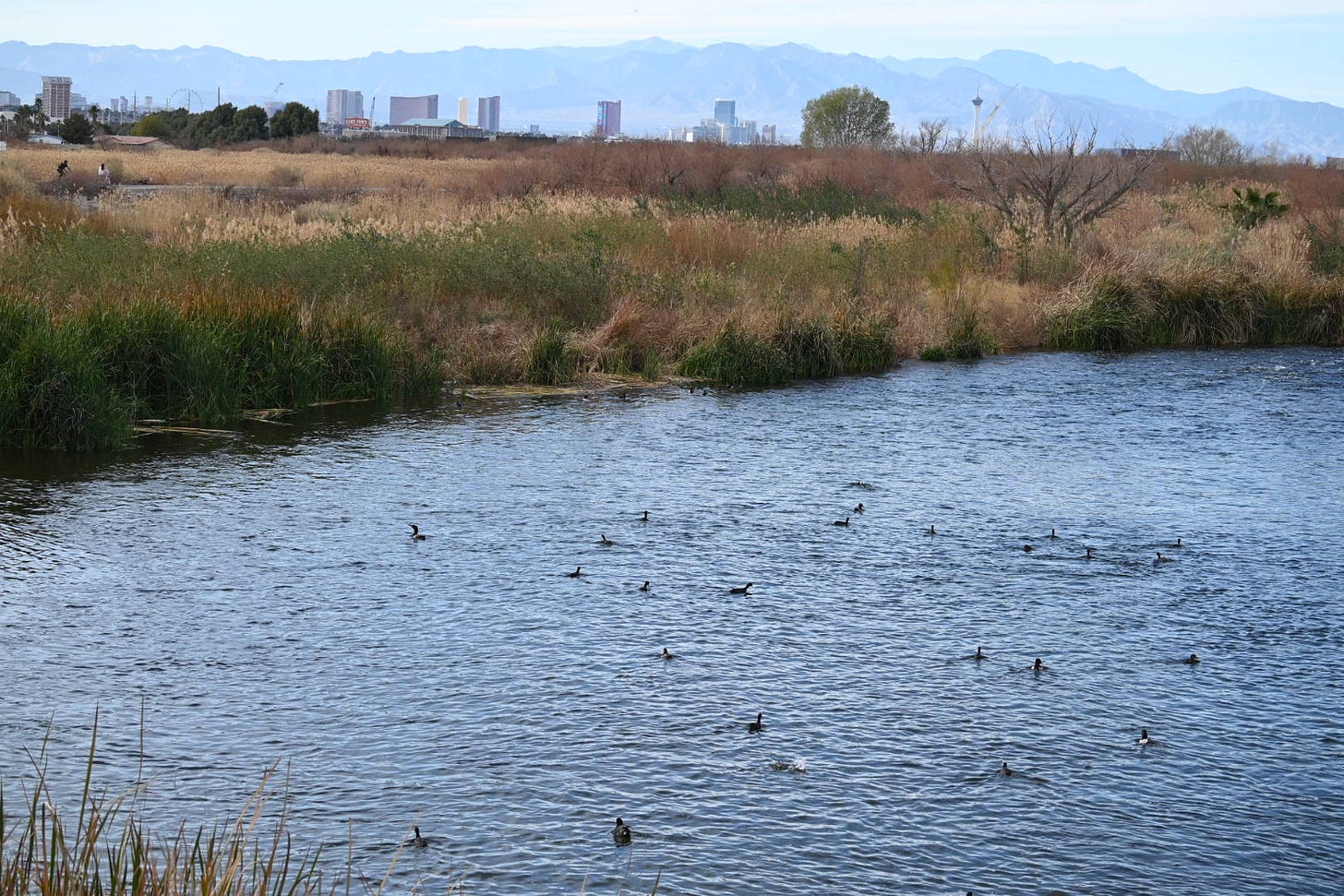
Until the very moment we pulled in to the Henderson Bird Viewing Preserve, I was utterly convinced that we were the victims of an elaborate prank, that we were in fact en route to a landfill, that at any moment my friend and I would be ushered into an abandoned building to have our organs harvested.
On the outskirts of Las Vegas’ dusty suburban sprawl, the preserve is surrounded by garbage-strewn empty lots and towering heaps of dirt and rocks supplying the never-ending construction of new developments.
We passed at least a dozen signs for the bird preserve on our way in, signs strategically placed to spurn birders onward through the disheartening environs. These signs assure one that despite all appearances, wild creatures, of their own free will, congregate here en masse.
It was hard to believe it was real even once we parked and entered the preserve’s charming visitor’s center, whose walls were adorned with posters of local wildlife, and a glass case through which one could view the resident honeybee colony at work. The park’s bird list for the week was displayed on a TV above the front desk, where a very kind woman asked us to sign in with our names and zip code.
She informed us the preserve was closing at 2:00 pm. It was already 12:30, and I had an nagging sense that we did not have nearly enough time.
When we step out the backdoor, the gentle chuffing of Northern Shovelers and the whizzing flight of hummingbirds is instant music to the ears. My jaw drops when I see the quantity and variety of ducks that dabble around the first pond. It is immediately obvious that this outing is to be everything I had hoped for.
Since the 1960s, birders have frequented this wastewater reclamation facility, which is the third largest body of water in all of southern Nevada. By this mere fact alone, it became irresistible habitat to numerous desert resident species and migratory waterfowl. In 1995, the city of Henderson decided to formalize birding at the facility and ensure that it was managed in a manner that prioritized bird habitat, while still serving its original purpose as a public utility.
Today, the man-made preserve contains nine large ponds of reclaimed water and the 140 acres of desert oasis they sustain. A five-mile trail system of paved and dirt paths traces the edges of each pond and winds through mesquite bosques and riparian woodlands. Each pond and plant attracts a distinct constellation of species. Just outside the visitor’s center, a band of familiar house finches enjoy the soft purple blooms and seeds of a huge, fragrant rosemary bush.
Nearby, the nasally cakking of common gallinules rattles the desiccated cattails. They are the suave cousins of the ubiquitous American Coots, dressed up in an evening gown with cherry red lipstick.
At the center of the open waters, hundreds of shovelers clump together and swim in a single swirling mass of ducks, a whirlpool of dabblers. Where the recharged water flows into pond 3, stunning Cinnamon Teals frolic and play in the bubbly current.
Ring-billed gulls congregate in a raft on pond 7, and the deep-water expanses of ponds 4 and 8 are an irresistible attraction for Eared Grebes, Ruddy Ducks, Buffleheads, and other diving species. The Ring-Neck Ducks and Pied-Billed Grebes gather in seclusion of the densely vegetated pond 9, where the reeds are never far away.
The waterfowl highlight of the visit for me was the female Long-tailed Ducks who are spending their winter at the preserve. This species breeds in the high Arctic of far northern Alaska and Canada and generally overwinters along the coasts. It is an exceedingly rare delight to see them in the middle of the Mojave Desert, hundreds of miles inland.
These are perhaps the most aquatic ducks I’ve ever observed — they only spent a few seconds on the water’s surface before disappearing back underwater for long stretches. According to their All About Birds page, they spend three to four times as long underwater as they do on the surface and are able to dive to depths over 200 feet. They seem more fish than bird, more penguin than duck, and it makes me giddy to imagine the epic journey they will make in another couple months’ time, back to their polar breeding grounds.
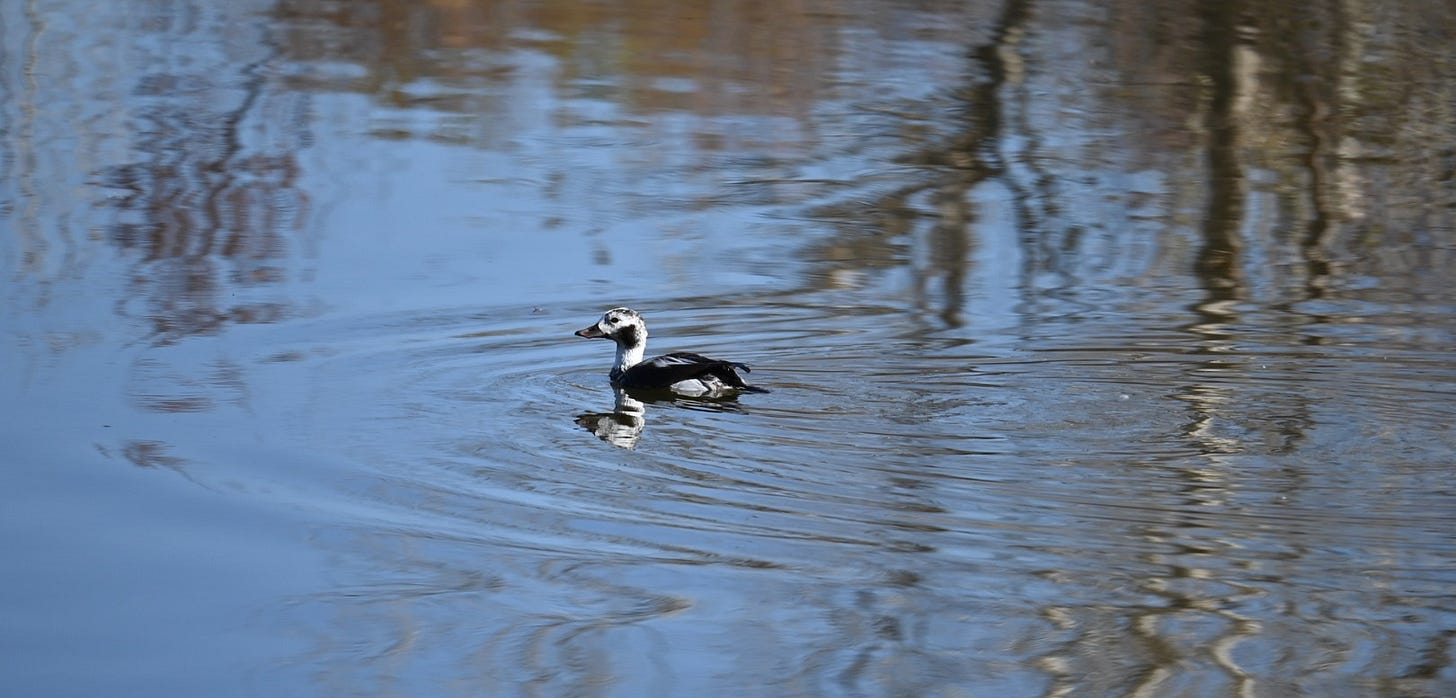
Of course, the avian delights of the preserve do not stop at the water’s edge. Bands of Gambel’s Quail cluck their way through the surrounding brushlands. From mesquite trees, tiny gnatcatchers, kinglets, and verdins raise a ruckus that far exceeds their size.
Along the barbed wire that marks the preserve’s perimeter, shrikes, phoebes, thrashers, and mockingbirds keep watch over the grassy meridians. Under the sunny February skies at 70 degrees, there are plenty of mosquitoes, gnats, worms, and dragonflies to nourish these insectivorous hoards.
Our day is undoubtedly blessed by the birding divinities. We round a corner at the exact moment that a Sora creeps out from a dense thicket of shrubs into full-body view. This extremely shy and secretive rail is often heard but rarely seen other than in shadowy glimpses as it weaves in and out of aquatic vegetation. I had never seen one walking on land in plain sight before this moment.
A Roadrunner chatters from up in a cottonwood tree, and moments later, her partner comes running up the path, stick in his mouth, to join her at the nest they’re constructing. He is the brawn, amassing the raw materials, and she is the brains, meticulously arranging it all into the perfect place for her eggs.
The cherry on top of any magical day of birding is a daytime owl sighting. We are fortunate enough to pass by some very generous birders on the boardwalk overlooking pond 4, who advise us to keep our eyes peeled for a football-sized mass in one of the large trees at the end of the walkway. Even with the winter trees mostly barren, I’m not sure we ever would have spotted this Great Horned Owl without this tip, as her camouflage against the bark is astounding. She rests with her eyes closed in what is perhaps her day time roosting spot.
Though the bird preserve closes at two in the afternoon (and I will admit we returned there the following morning for several more perfect hours before leaving town), the fun does not have to end there. The adjacent Clark County Wetlands Park is another 2,900 acres of restored wetlands habitat, with trails open from dawn to dusk in its 210 acre nature preserve.
Its visitor center, which had closed by the time we arrive, is the size of a legit museum, complete with exhibit halls, a nature store, meeting rooms, and an indoor, air-conditioned picnic area. The community of Henderson has clearly made an enormous investment in this habitat restoration project, which serves as a spectacular resource for recreation and outdoor education for the city’s hundreds of thousands of residents.
As we weave our way between small ponds and creeks into a riparian woodland of enormous cottonwoods, Double Crested Cormorants criss-cross in the sky overhead. A covey of quail darts for cover in the desert scrub. It feels like we are as far from the city as can be until we reach the footbridge over the Las Vegas Wash, from which the iconic shapes of downtown Vegas — the Sphere, the Strat, the High Roller Wheel — are clearly visible.
An Osprey soars in with his enormous wings bent in an M-shape and lands on a barren perch overlooking the wash.
His presence and that of the Great Blue Heron, Great Egret, and Black-Crowned Night Heron all indicate that this wash has become prime habitat for fish. While a river has flowed intermittently through this wash for millennia, it now flows constantly with water treated and discharged from the Vegas area back down to Lake Mead. This story is the opposite of the one told by most Southwestern rivers, which have downgraded from perennial flows to intermittent trickles due to damming, groundwater pumping, and all manner of reckless human water use.
But all that water we use and discard has to go somewhere, and it is brilliant how the environmentalists of Clark County have harnessed it to reinvigorate this wetland habitat.
This new perennial wetlands is a distinct habitat from the seasonal wetlands that would have existed here for thousands of years before. It is so different that I hesitate to call this project habitat “restoration.” It’s habitat transformation, undertaken in such a thoughtful way by the community of Henderson so as to attract many species who need deep flowing waters and large fish supplies, who may never have spent time here before.
Constant expansion of human development impacts birds enormously whether we think of them or not. Though I think we are nearing the end of this era of unchecked, reckless growth, humans are clearly not going to hit the brakes on development until utter catastrophe forces our hand. Which it will, sooner than we think. But in the meantime, I find it rather hopeful, in an environment of mounting hopelessness, that there are communities that value the presence of wildlife enough to invest enormous resources into revitalizing and enriching lost habitat.
We are still wild creatures ourselves, and what is good for birds is good for us, too — we benefit enormously from this habitat restoration. For one, the existence of this constructed wetlands slows the movement of water through the whole landscape. This reduces the dangers of flash flooding, minimizes the erosive forces channelizing the Las Vegas Wash, and allows far more desert vegetation to benefit from this water source. And we simply enjoy, at soul-level, being in places where we can encounter so much fellow wildlife.
From what I can tell, these two incredible conservation projects — the Henderson Bird Viewing Preserve and the Clark County Wetlands — were funded largely, perhaps entirely, at the city and state level, without federal funding. This is particularly heartening in our current situation, when many federal agencies which oversee conservation and habitat restoration projects, from US Fish and Wildlife to the National Park Service, have been abruptly stripped of critical funding and staffing. Species will go extinct as a direct, literal result of these actions, species which do not have four more years to spare.
I believe wholeheartedly we are heading into our sixth mass extinction fueled by human carbon emissions — the scientific evidence of that could not be clearer. Many species, most even, will go extinct in the coming century, but others will adapt. Some will become more numerous than ever before. The adaptability of birds is astounding and inspiring, and I will always look to them as the world around us changes faster and faster every day. When I see birds embracing so many manmade structures for their own purposes — from power lines to reservoirs, from wastewater facilities to barbed wire fences — I can’t help but be comforted by the knowledge that our society and its vast constructions benefit some of them, at least some of the time. I can’t help but wonder at how quickly and completely they’ve taken to things that did not exist at any other time in their millions of year of evolution, and the ingenious new ways they find to live in the new world. I heard about these places on eBird, but how did the birds hear about them? They have existed for even less time than the Internet, yet migratory patterns established over many millenia have already been rerouted in response. The scrappiest, most versatile among them — the Crows and Ravens, the Pigeons, the Mallards— will surely inherit the Earth.
On the outskirts of a city that is so ecologically ill-conceived, concentrating millions of people in the hottest, driest desert on our continent, the Henderson Bird Preserve and Clark County Wetlands are beacons of hope for humanity. They showcase the magic and beauty that can arise when we work synergistically with our ecosystems, when we stop viewing natural resources as a zero-sum game.
A far cry from the hubristic feat of human construction that is the Hoover Dam, which recklessly transformed the entire hydrology of the Southwest in order to make our desert metropolises possible, these preserves use simple tools — small weirs, native vegetation — to return vitality to this landscape. Now, they are places that enhance the quality of life of all their resident and migrant creatures, human, avian, and otherwise.
May we all find out ways into communities where hope is protected and restored, one pond of ducks at a time.




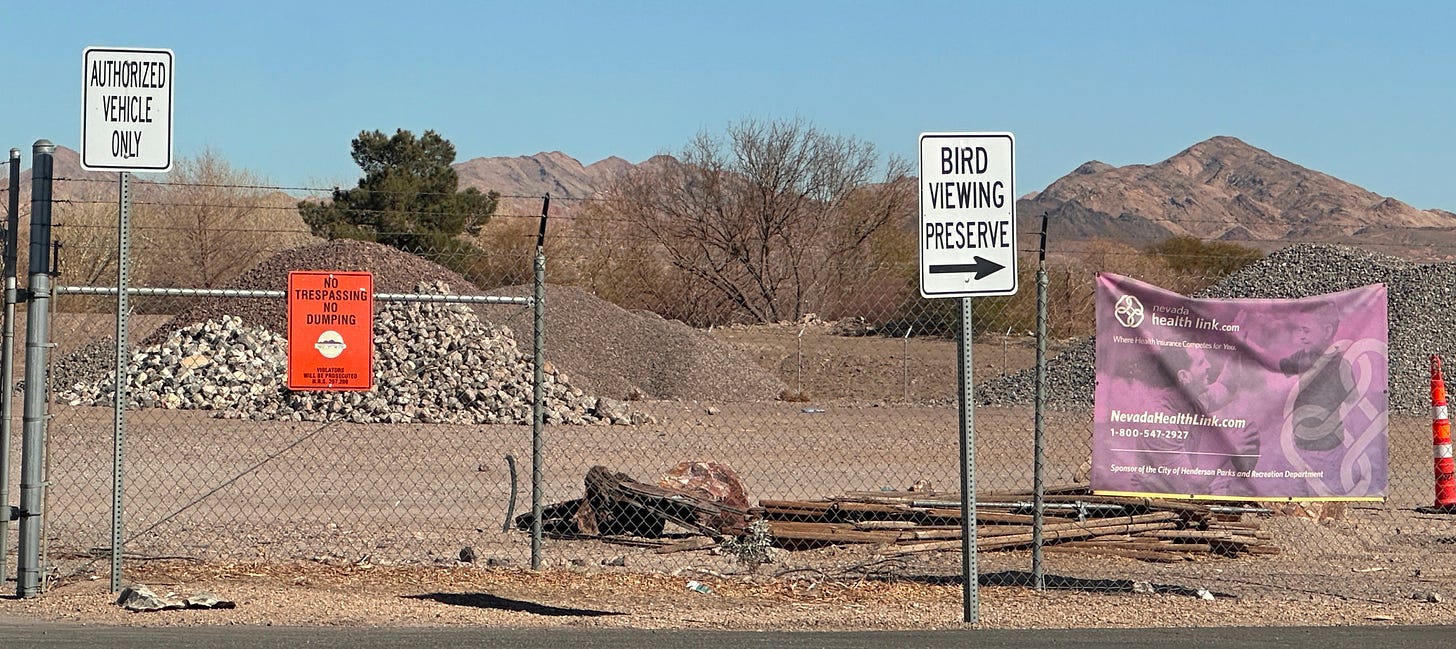
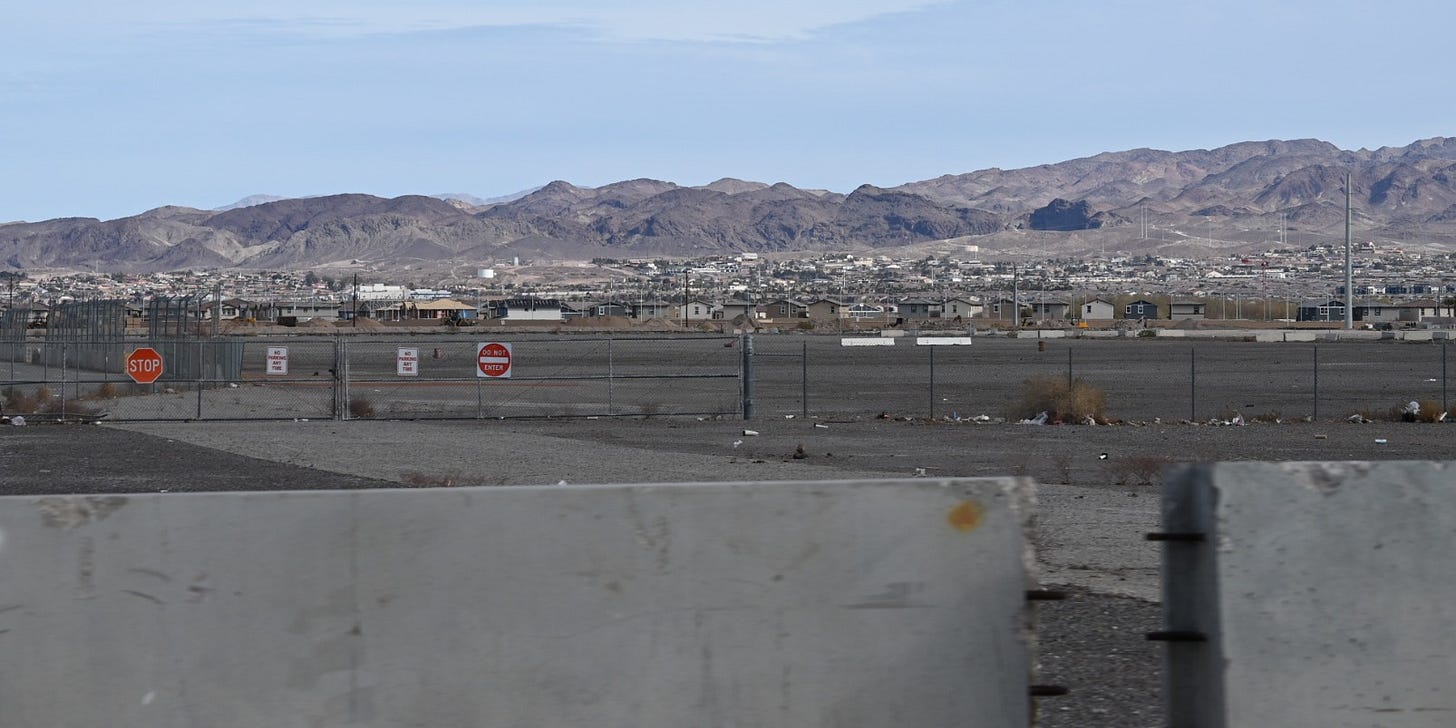
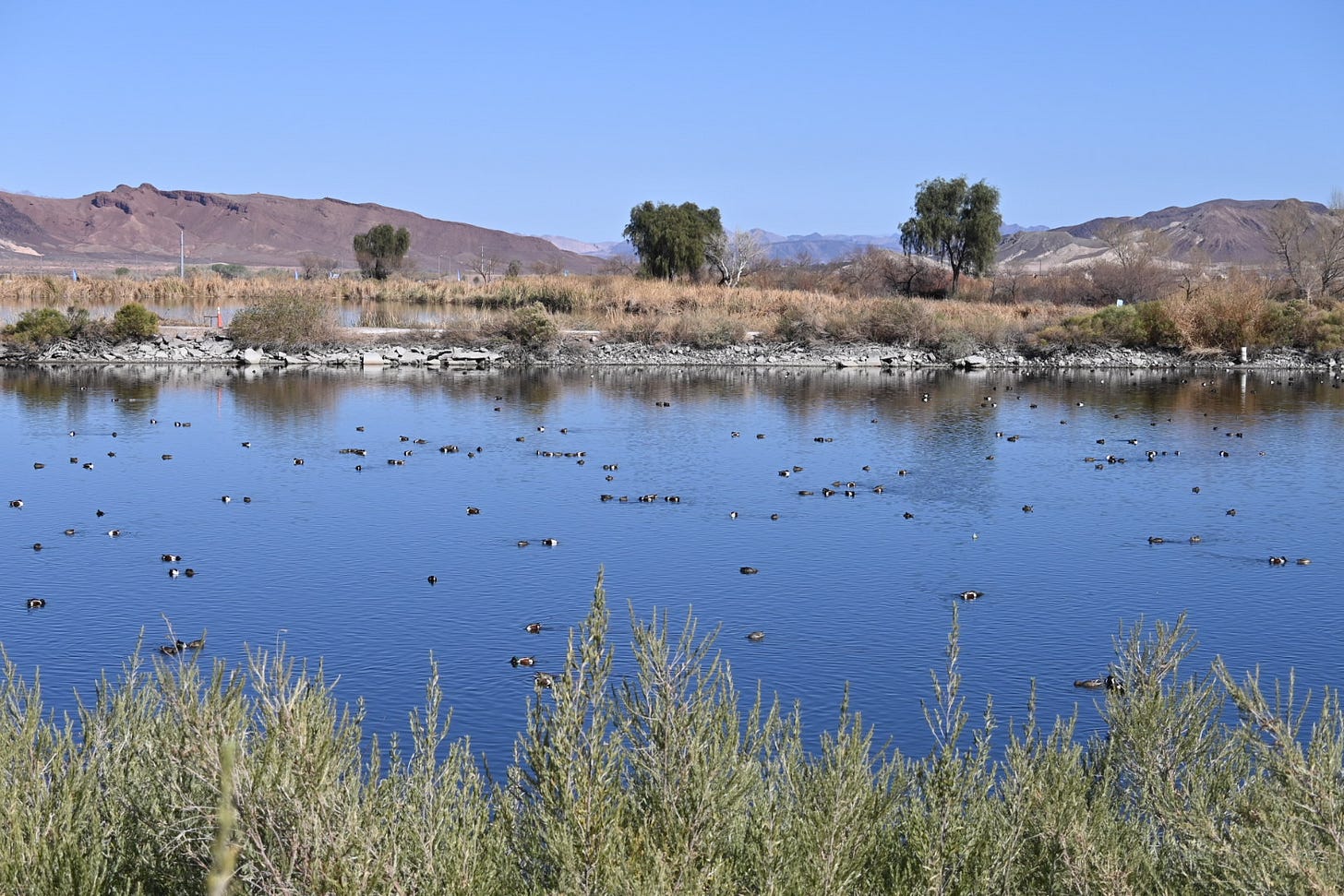
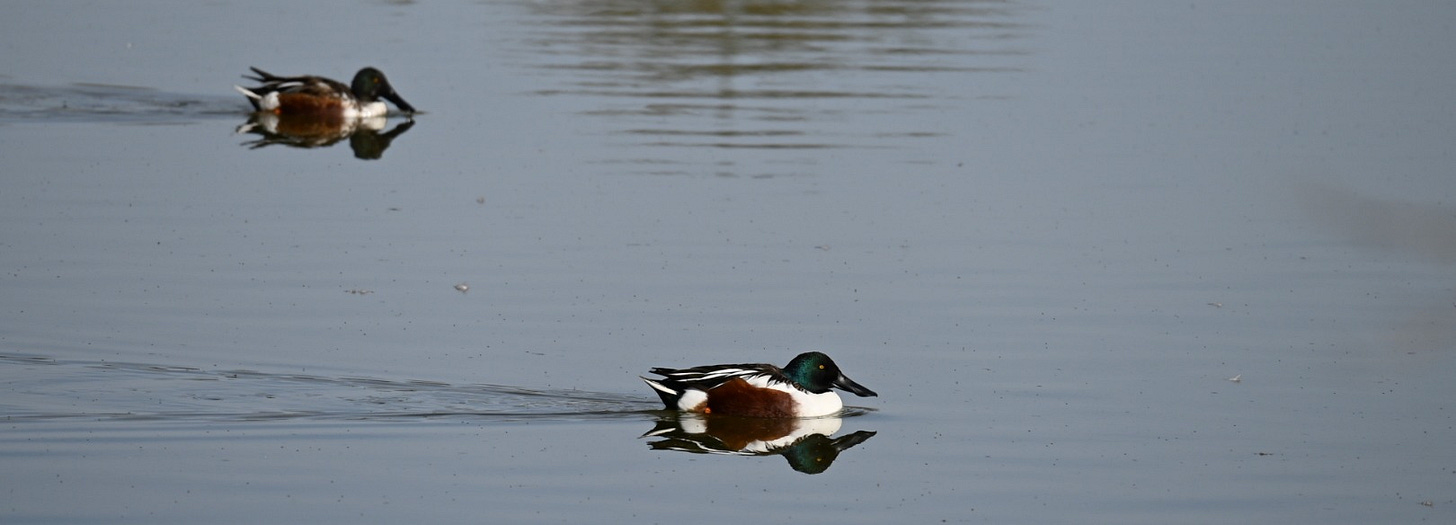
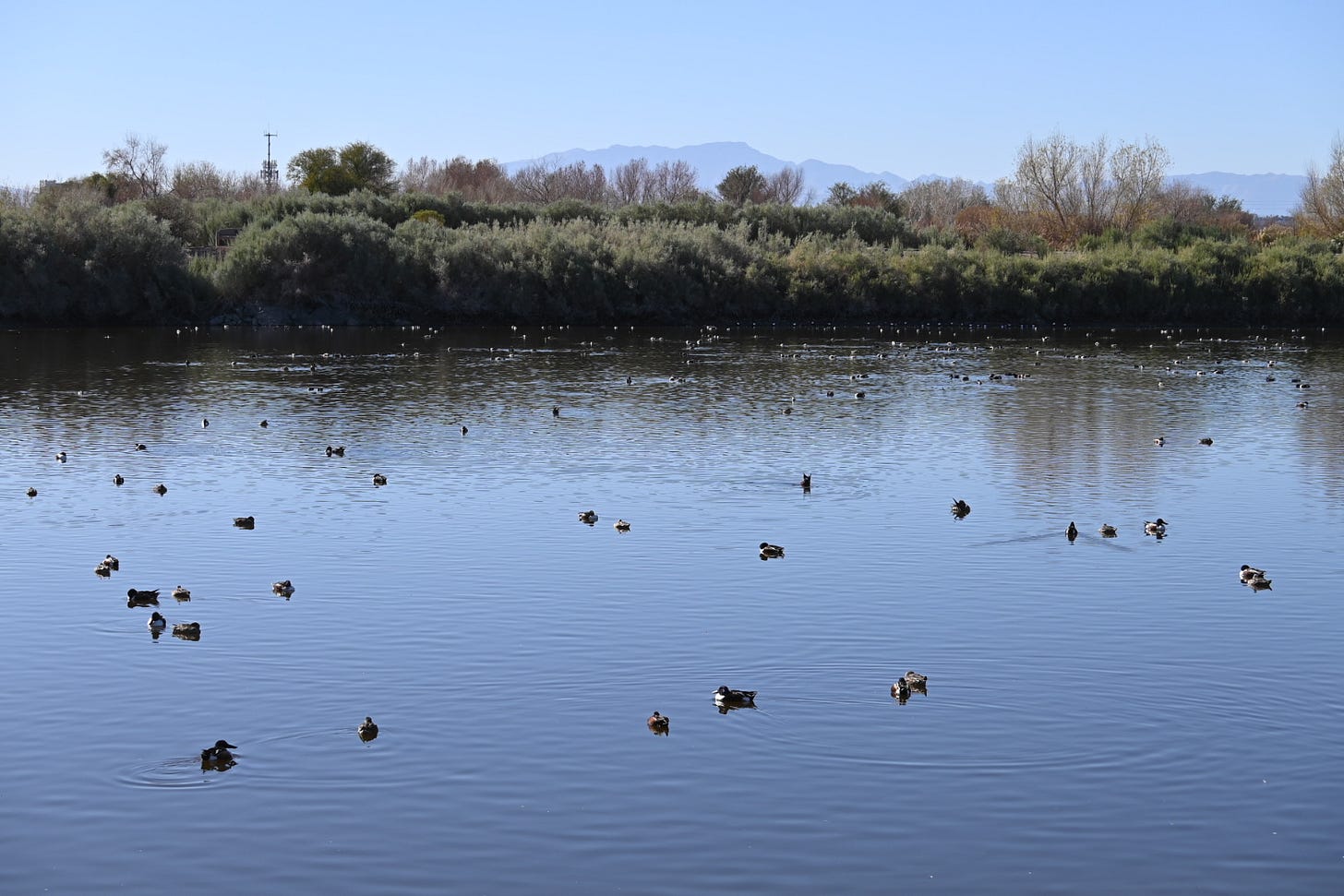
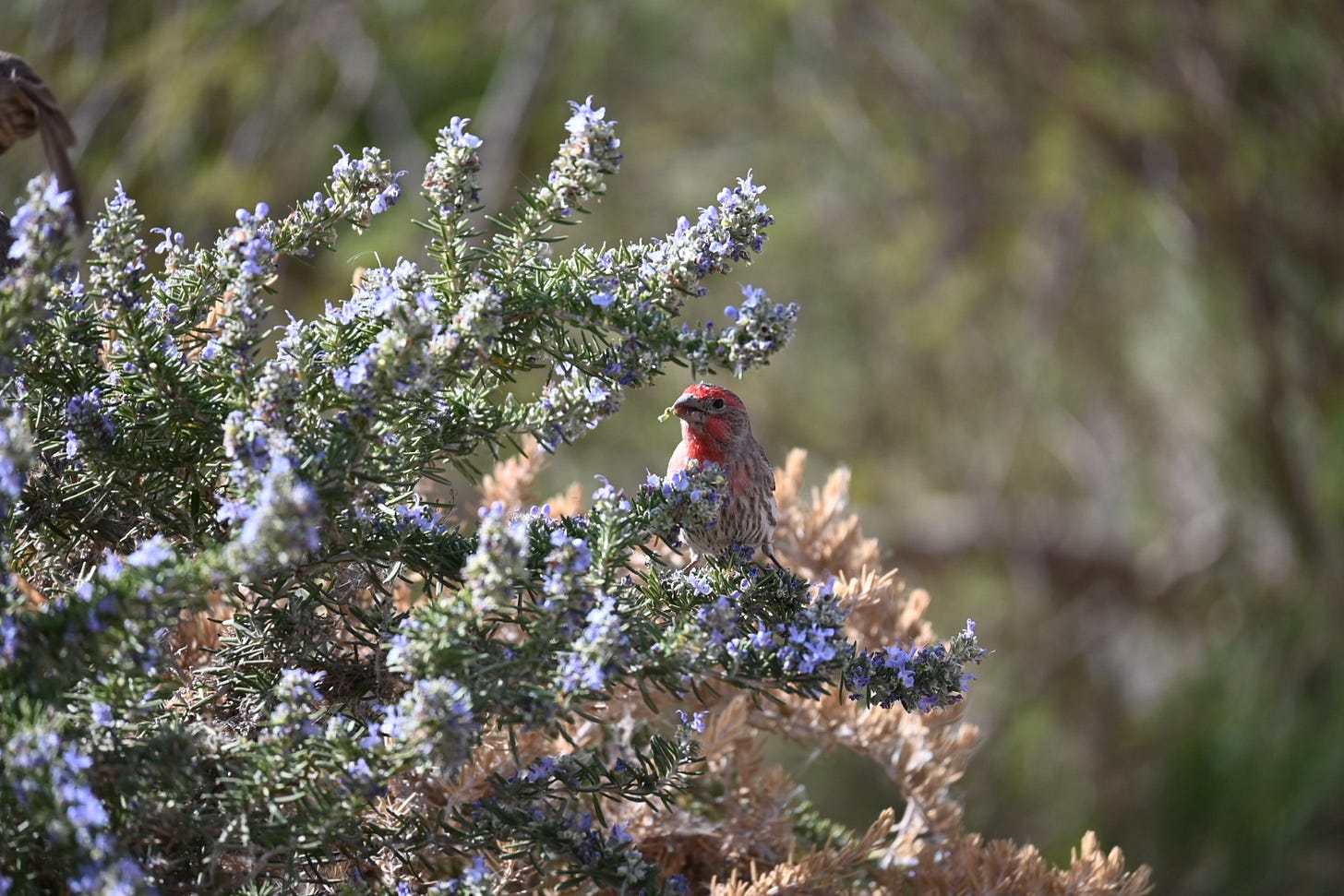
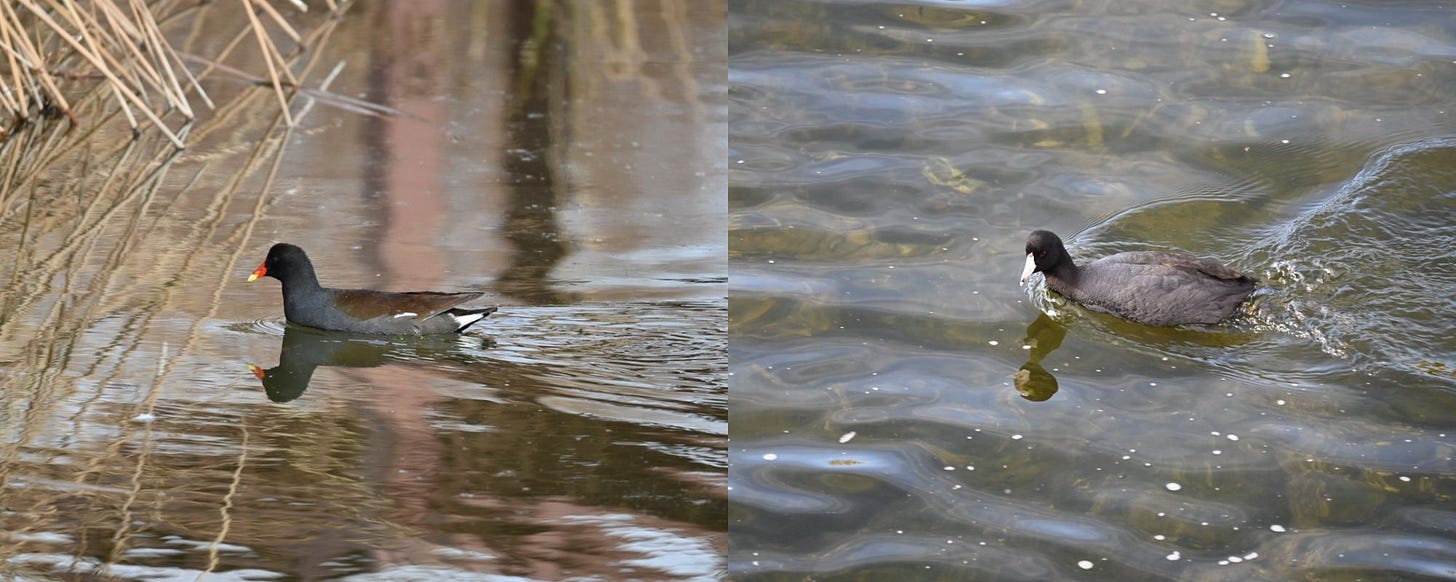
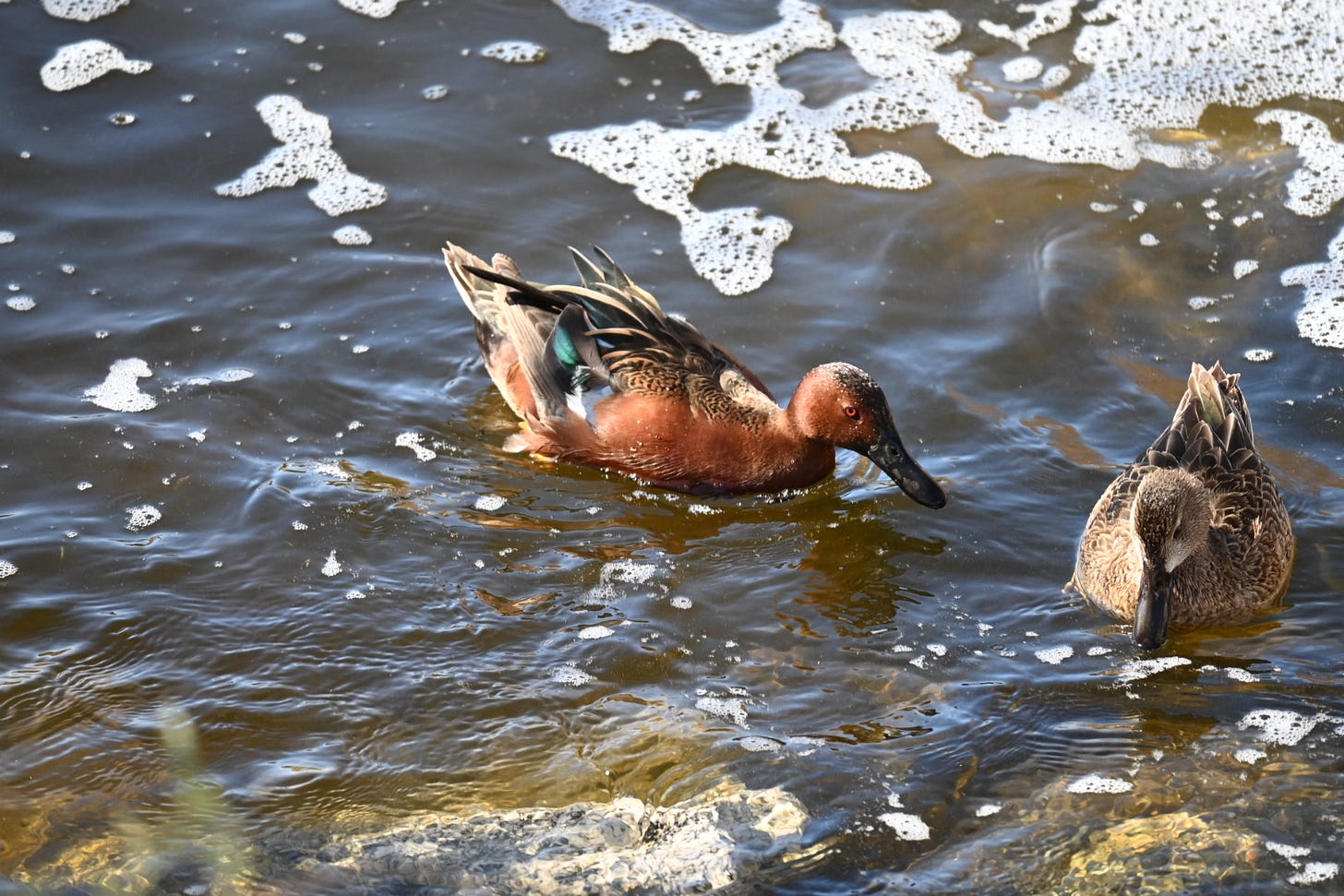
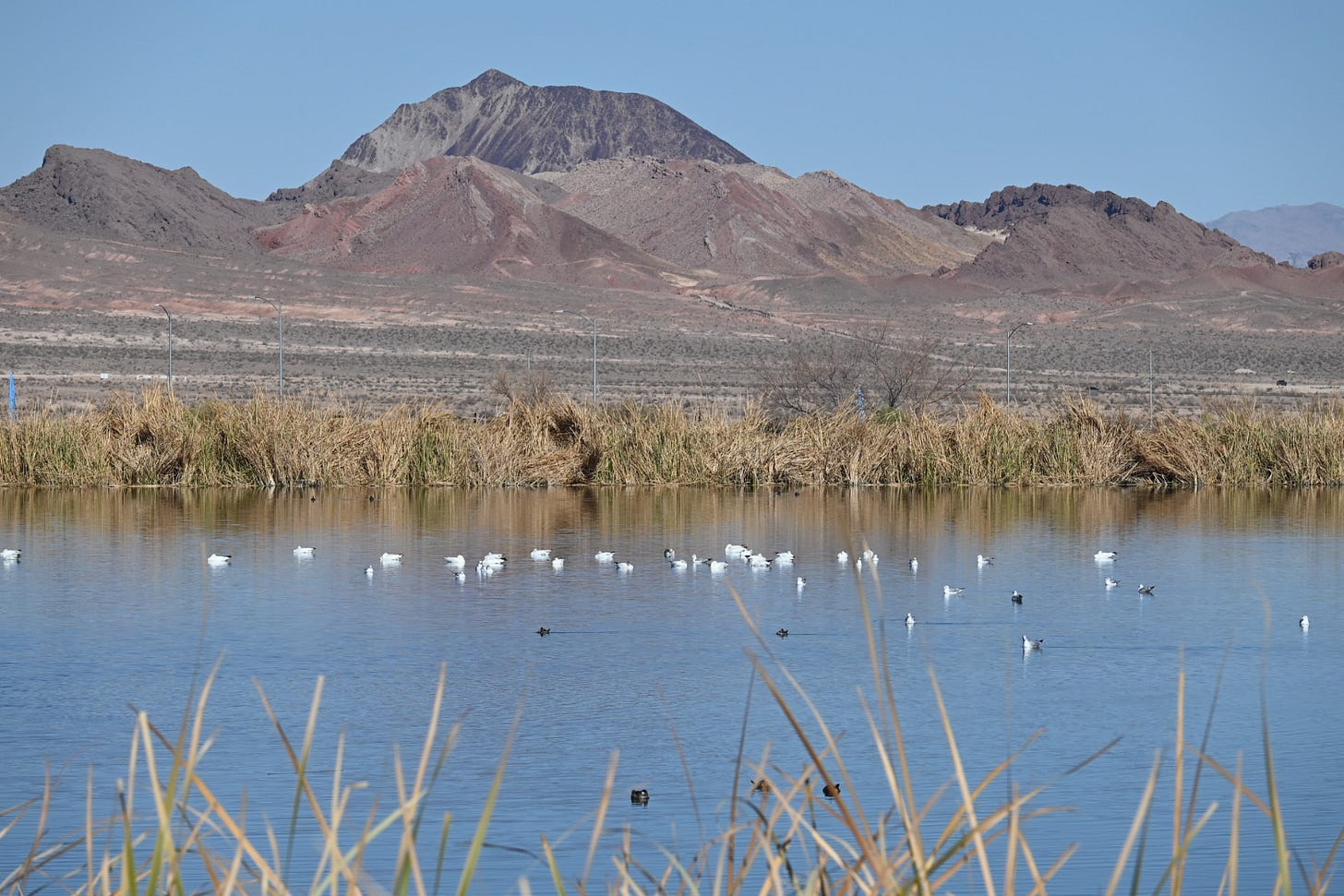
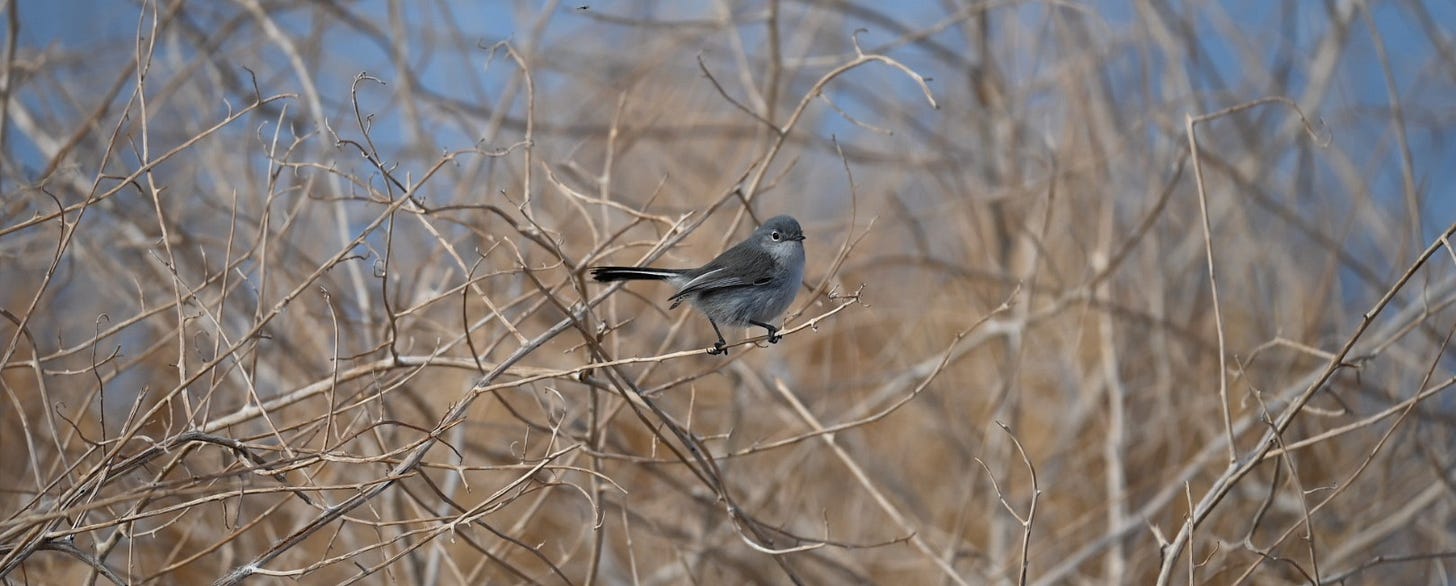
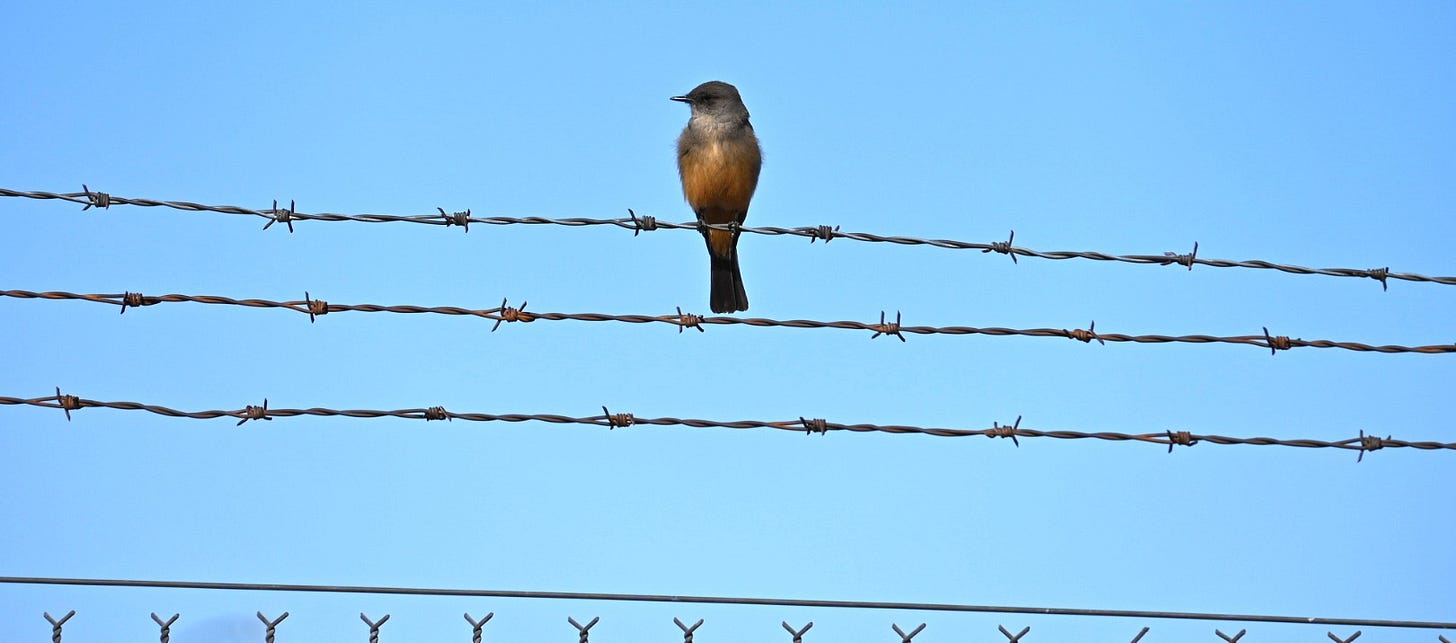
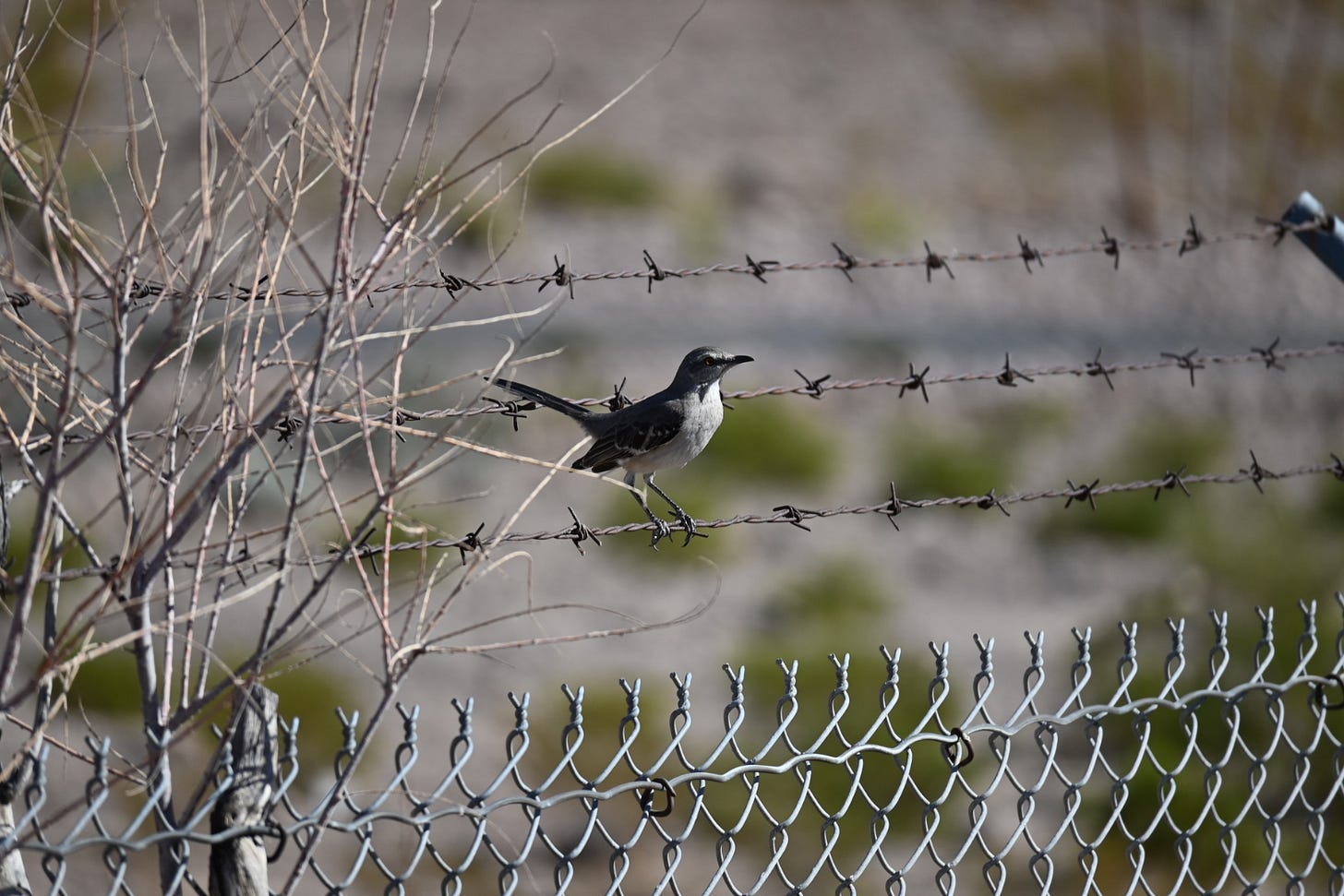
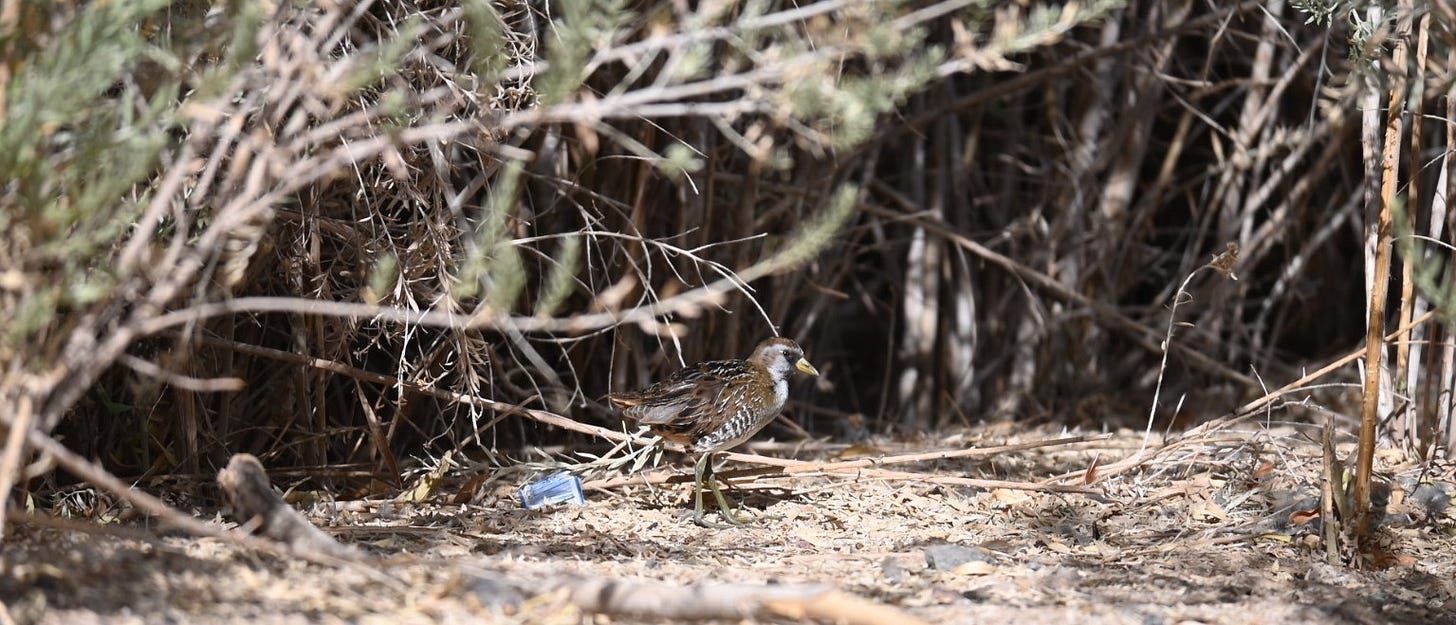
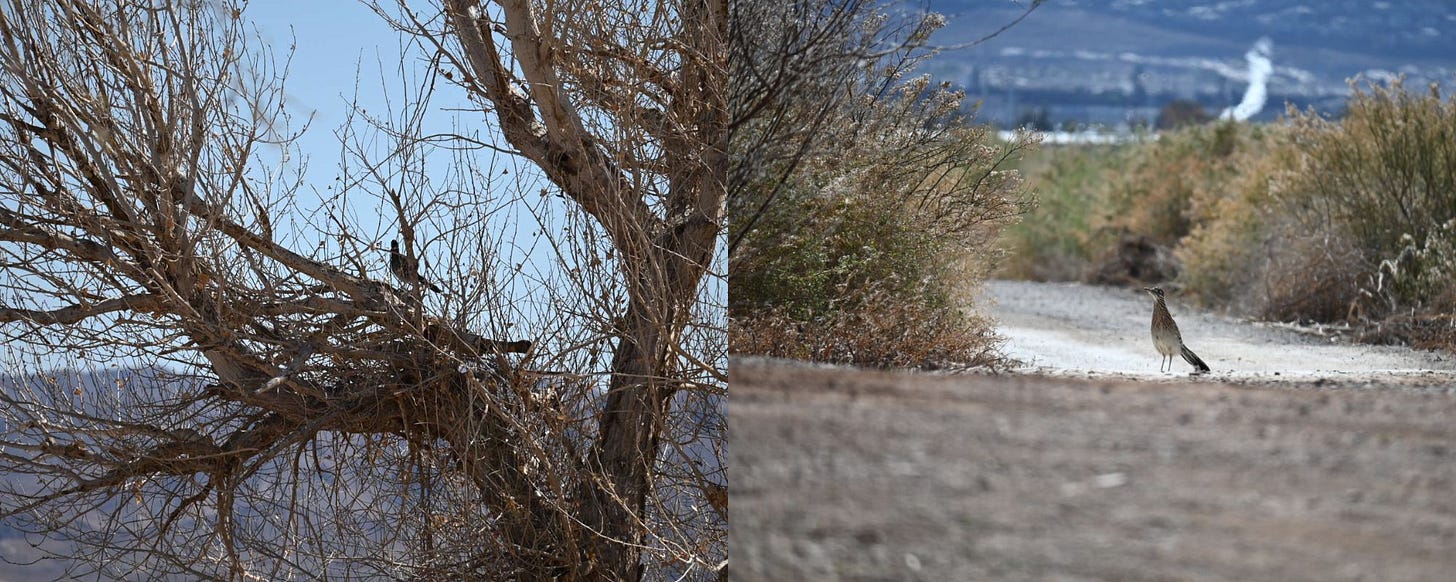
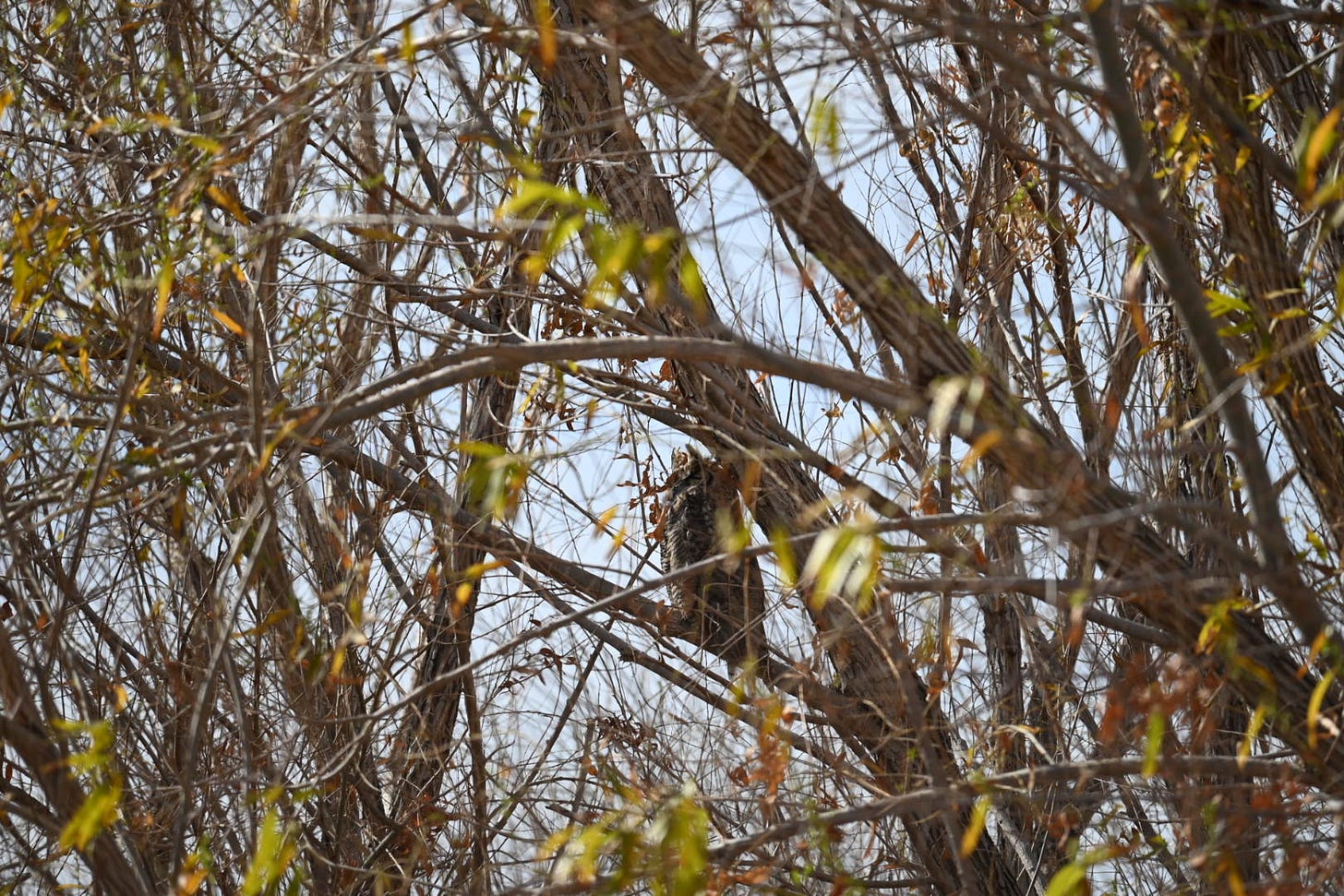
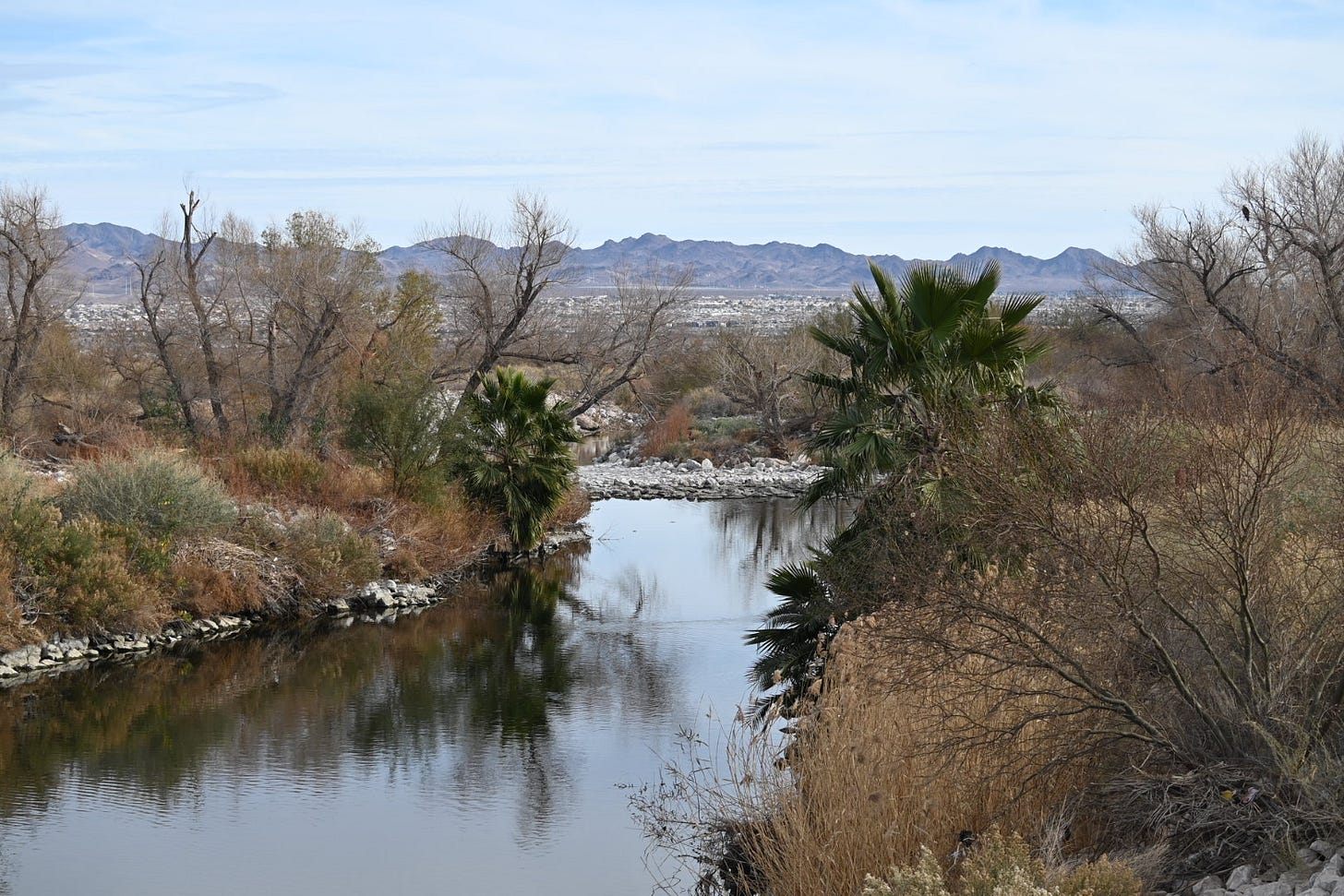
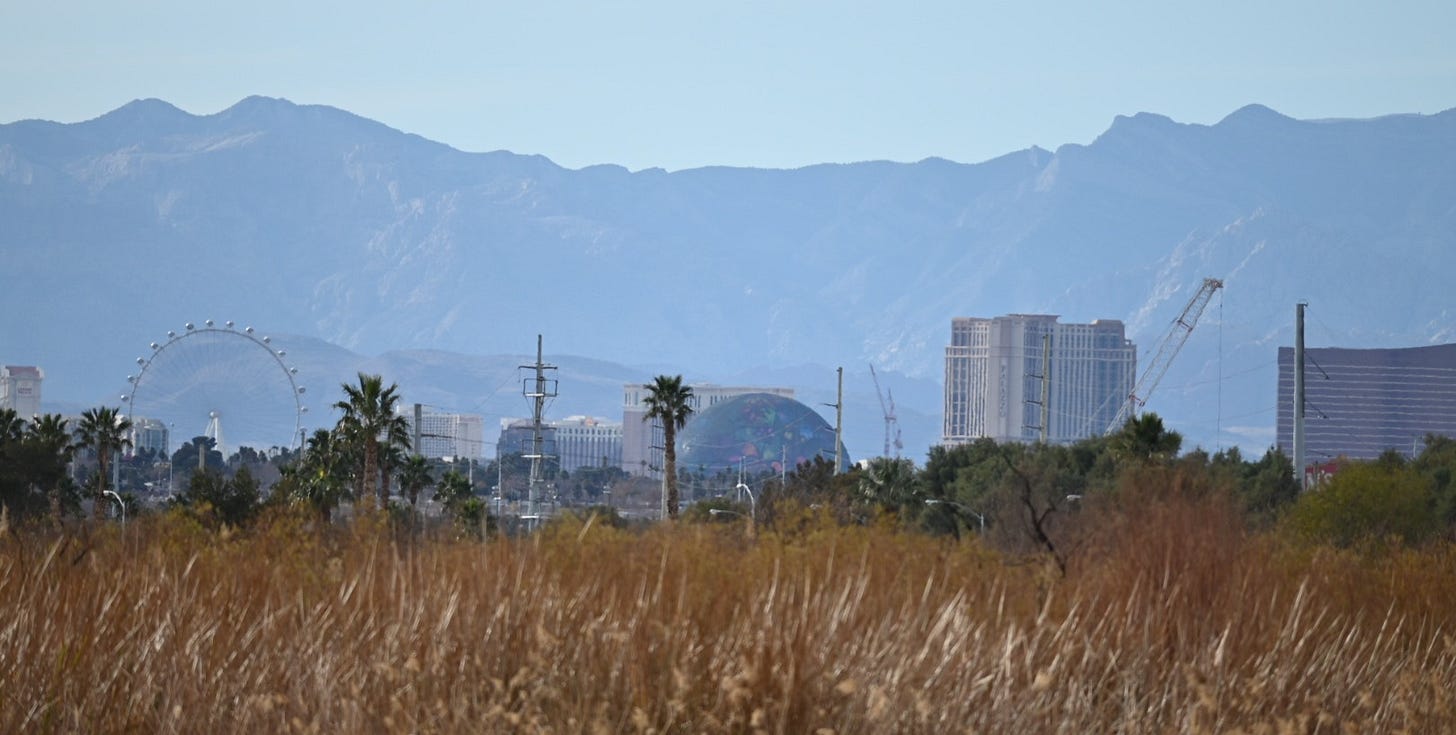

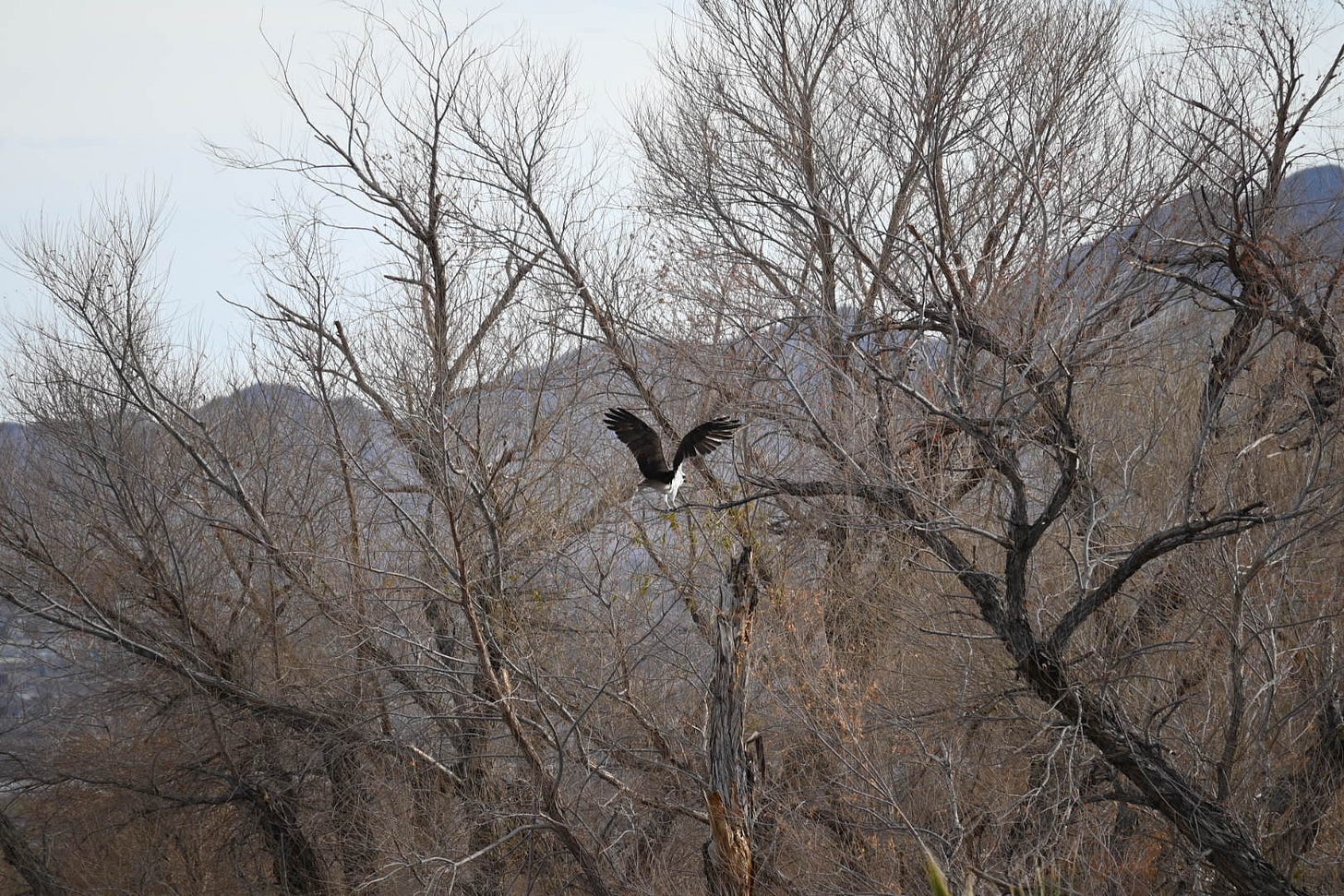
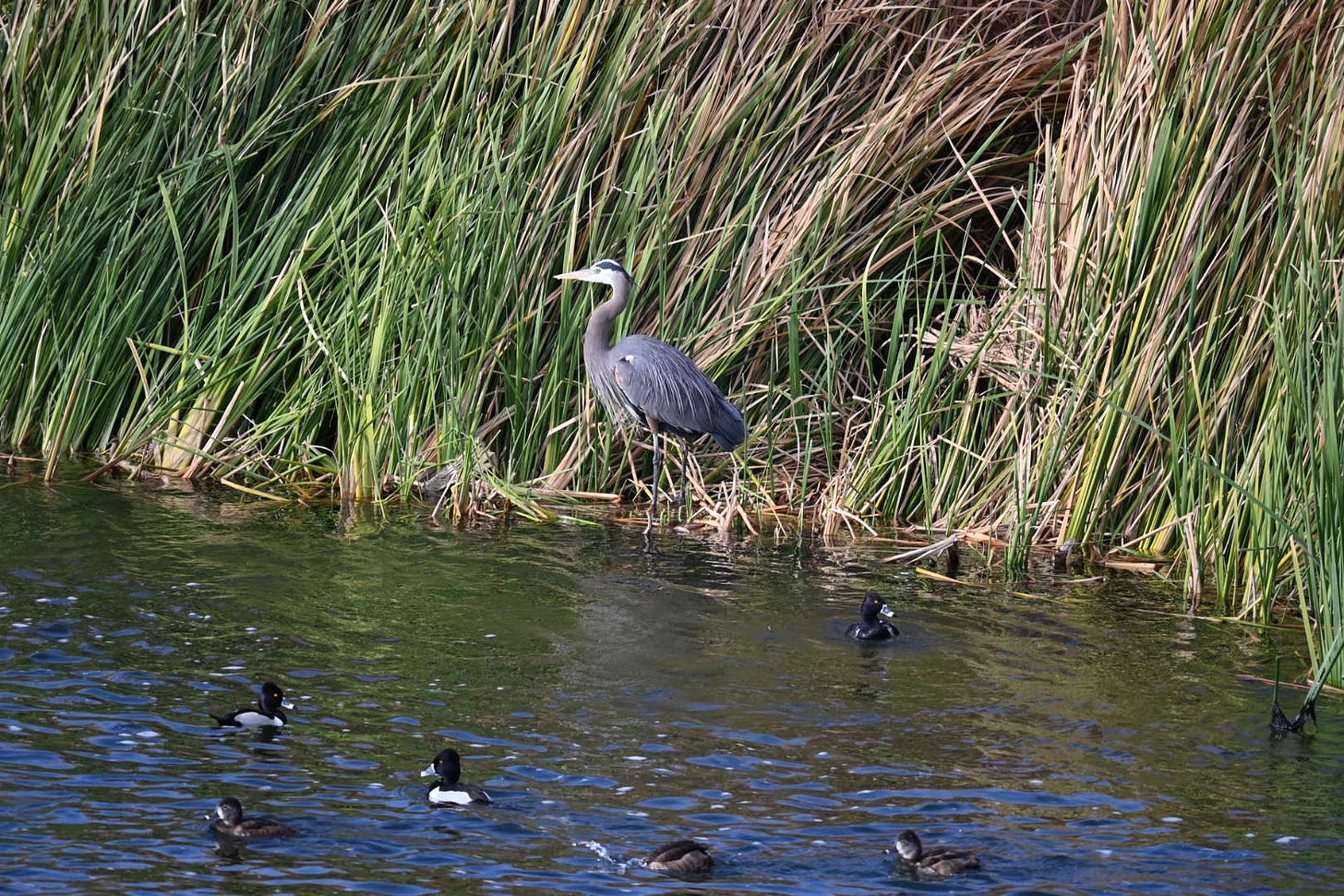
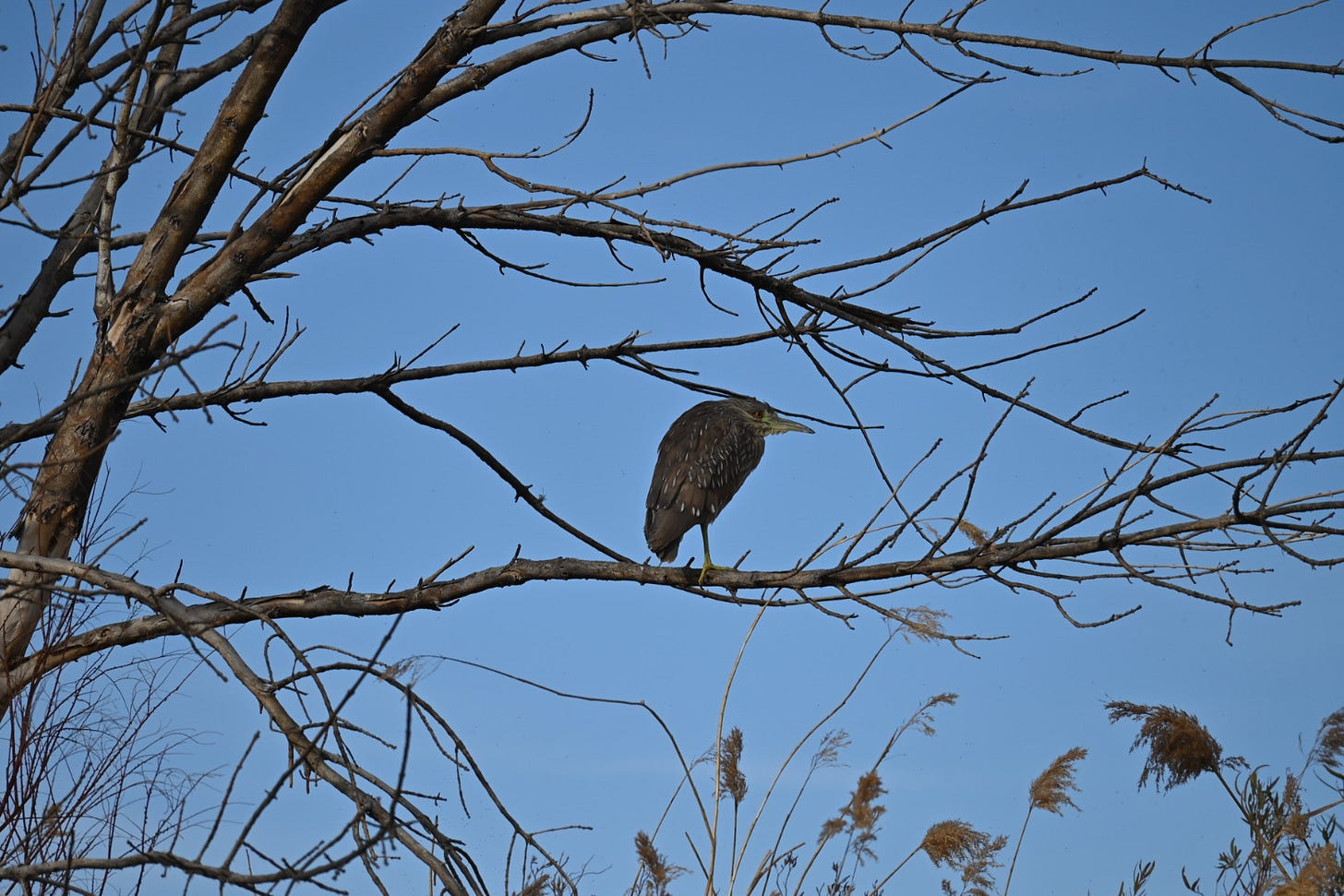
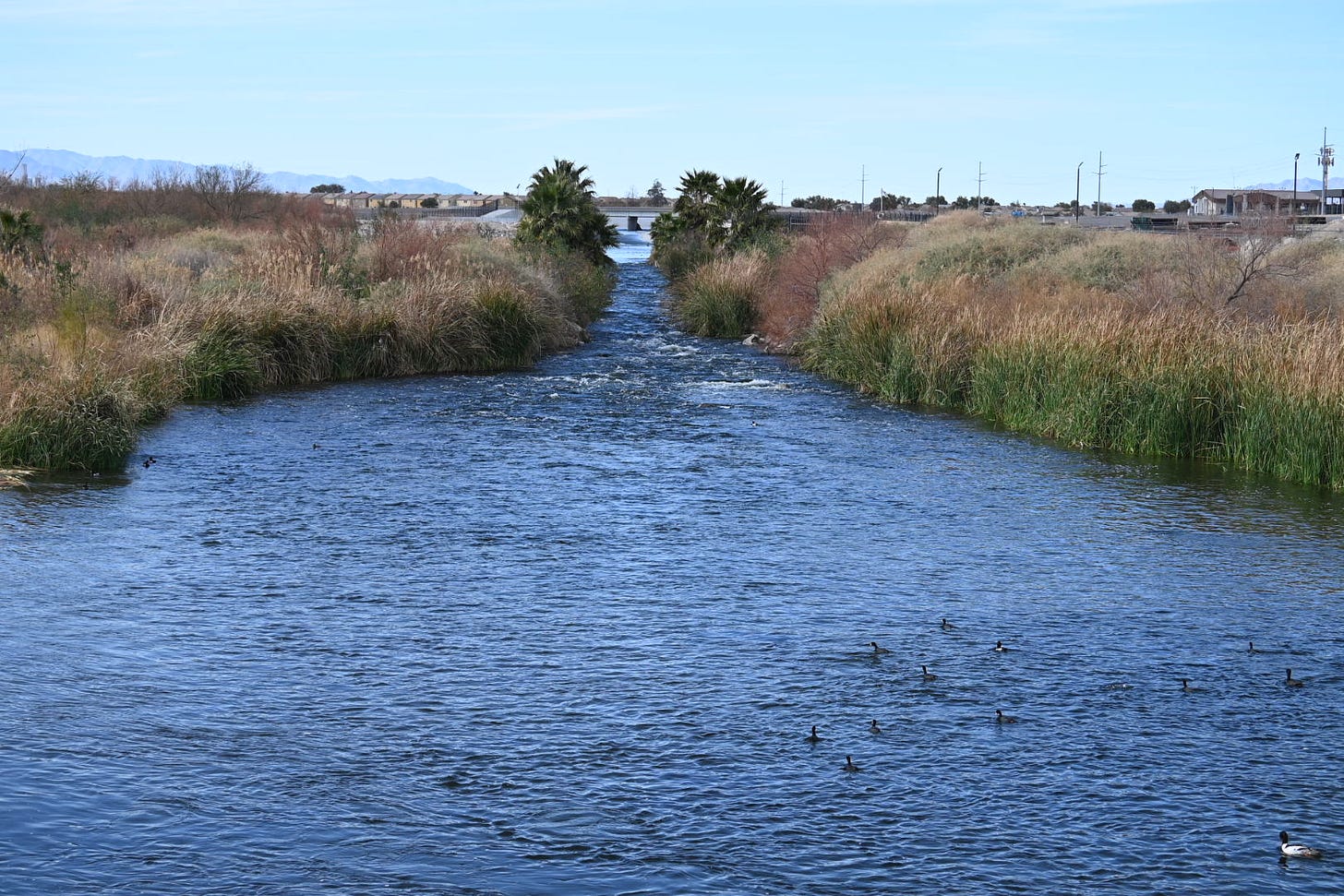
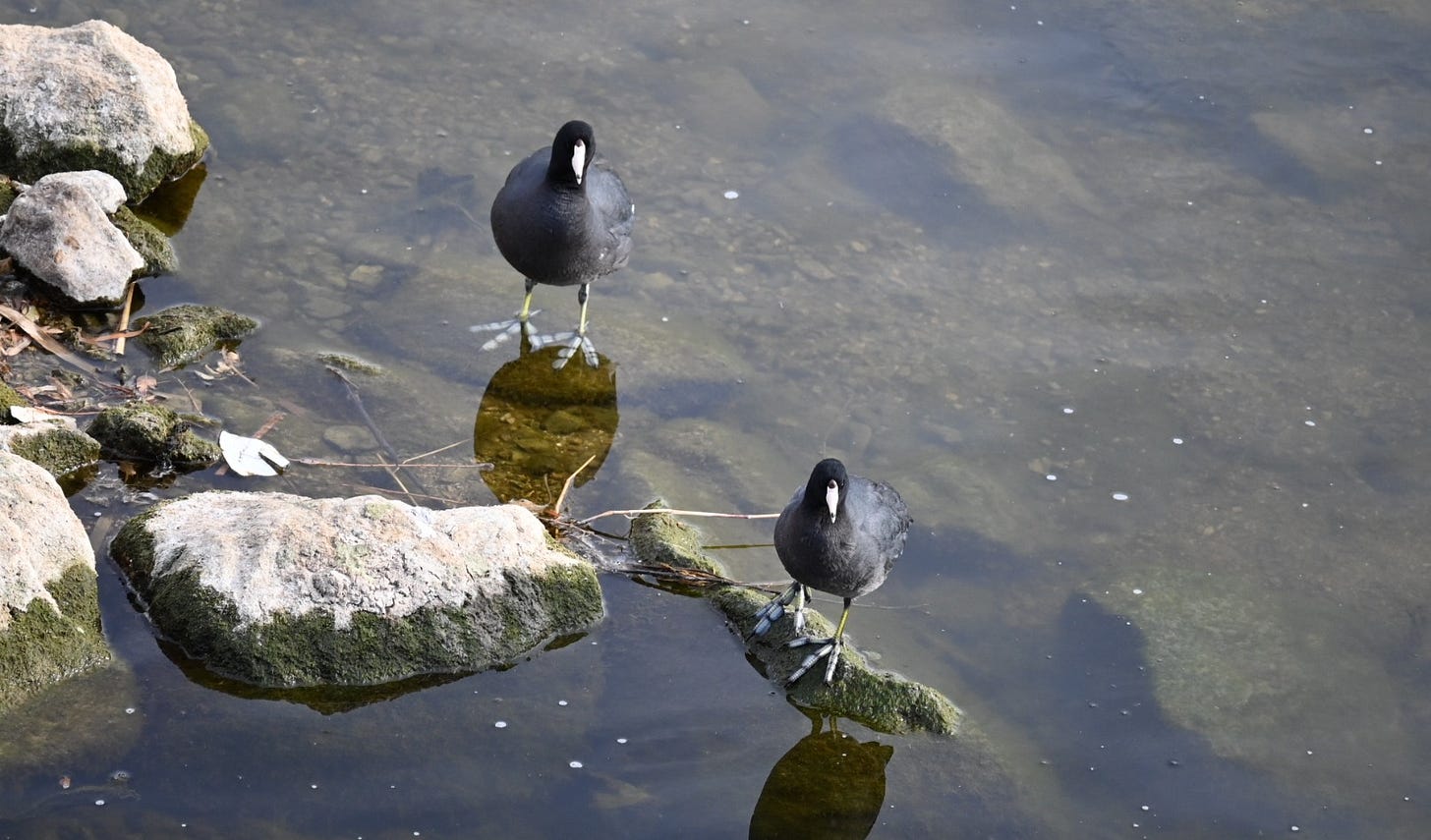
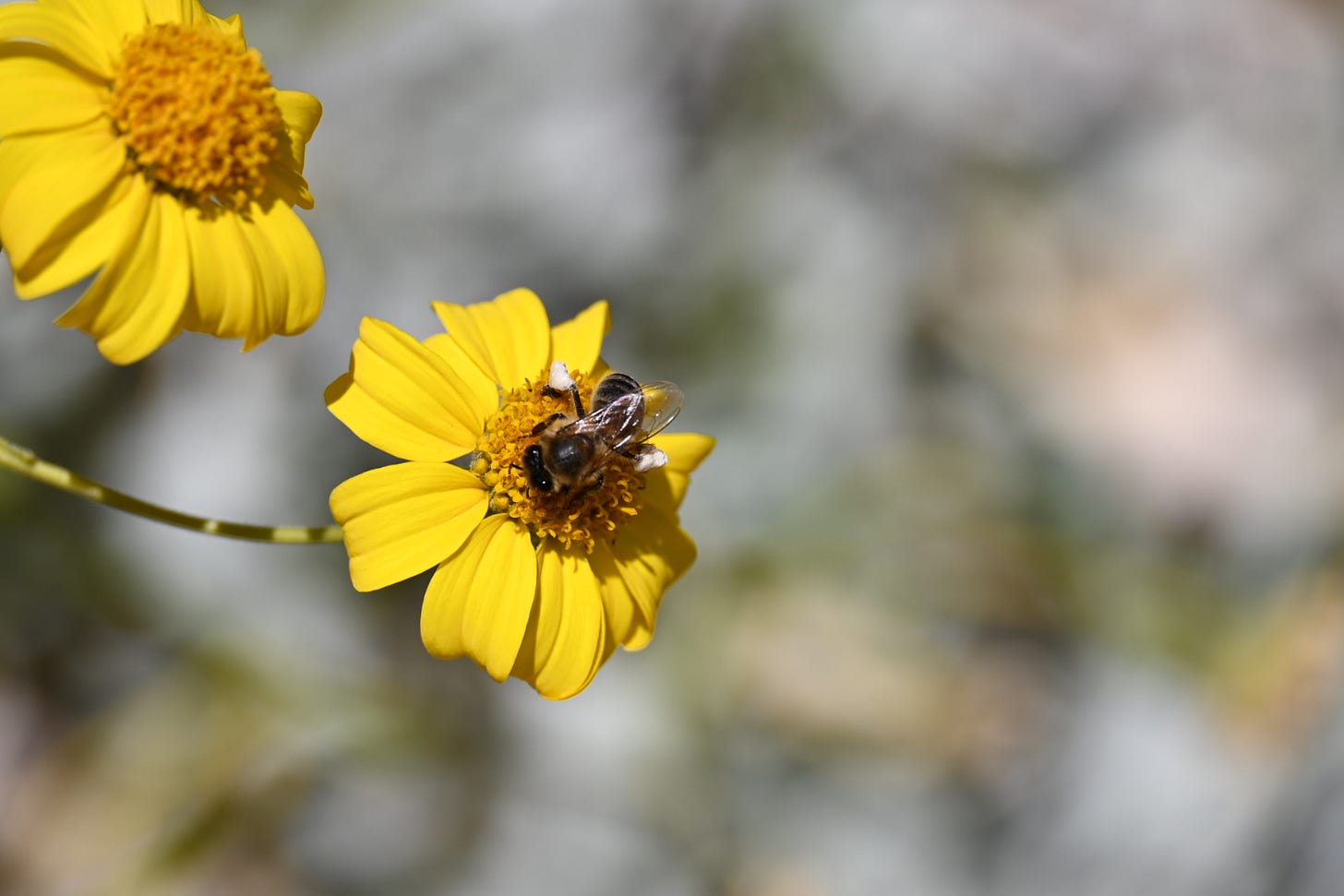
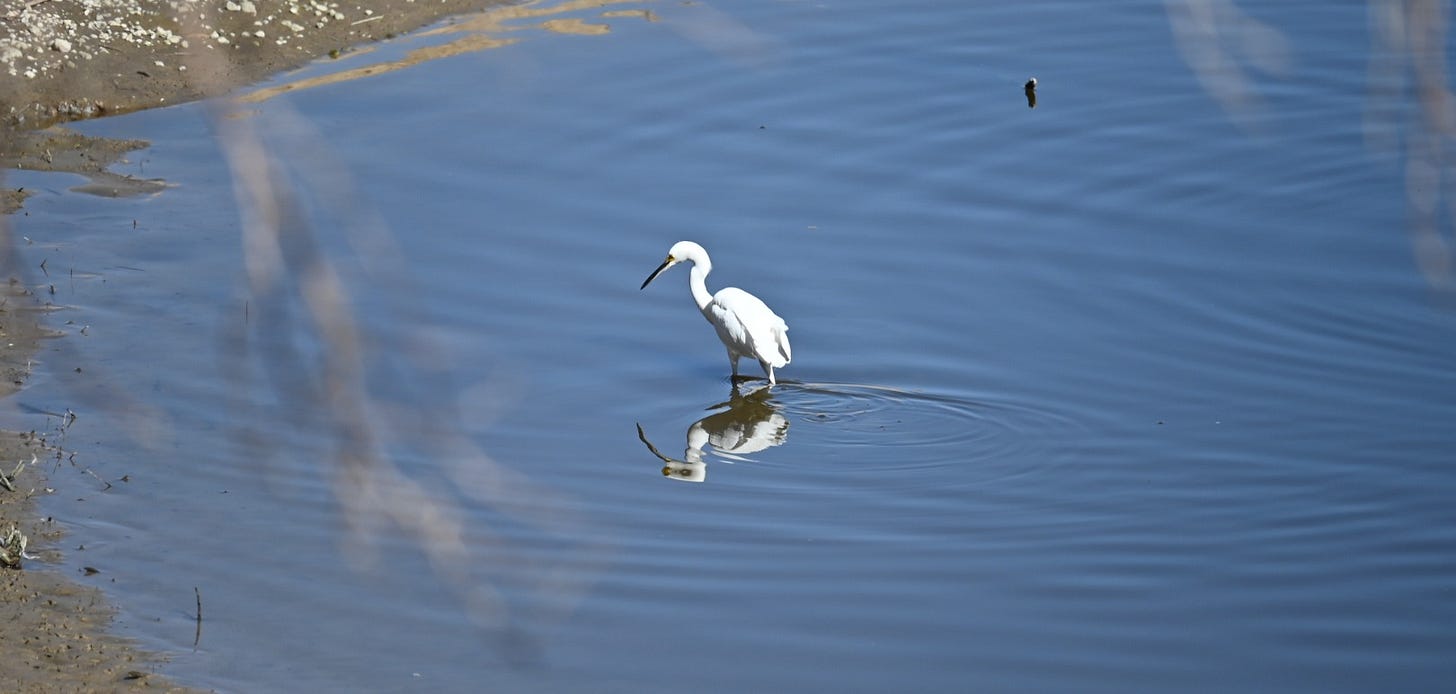
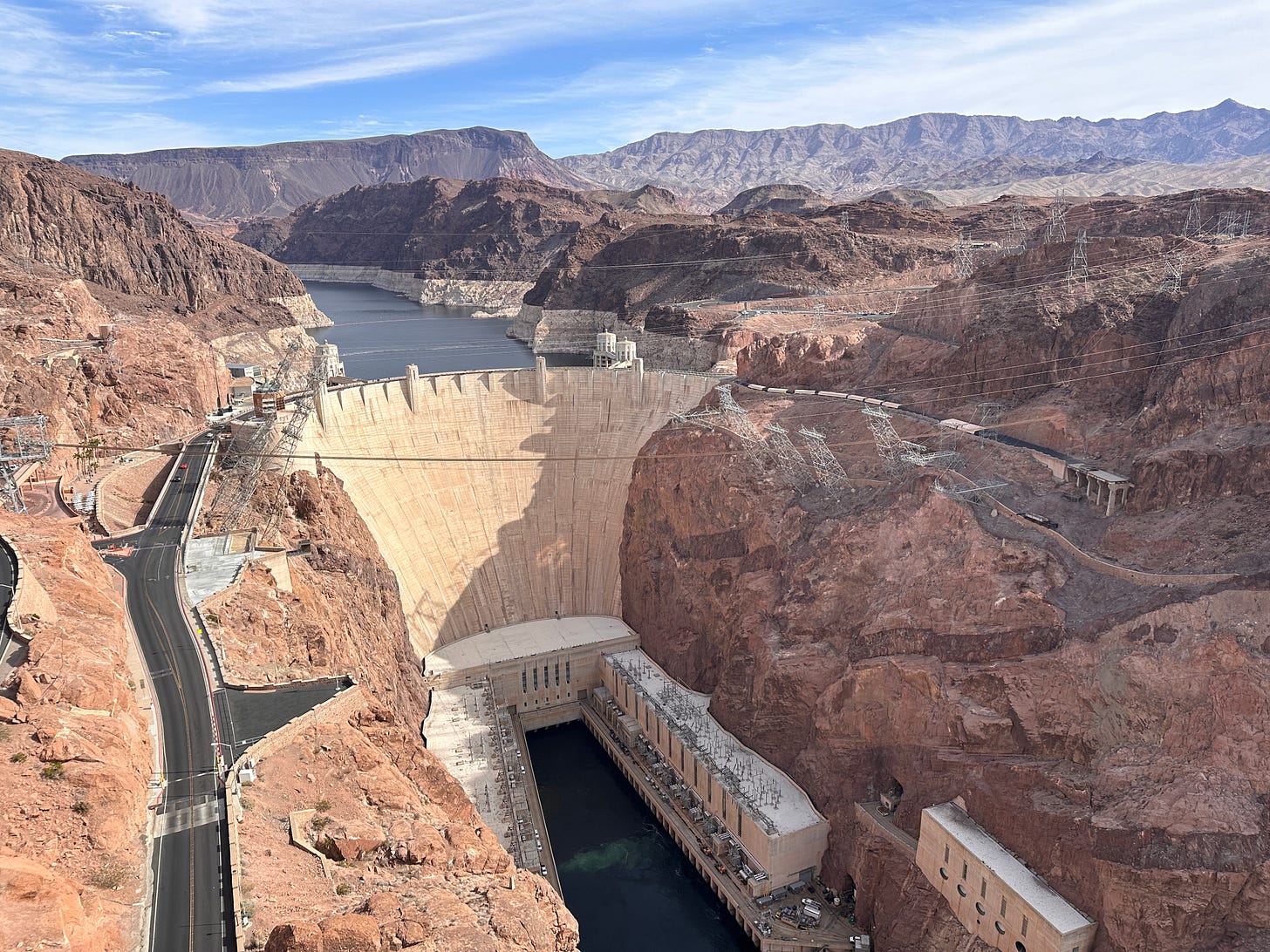
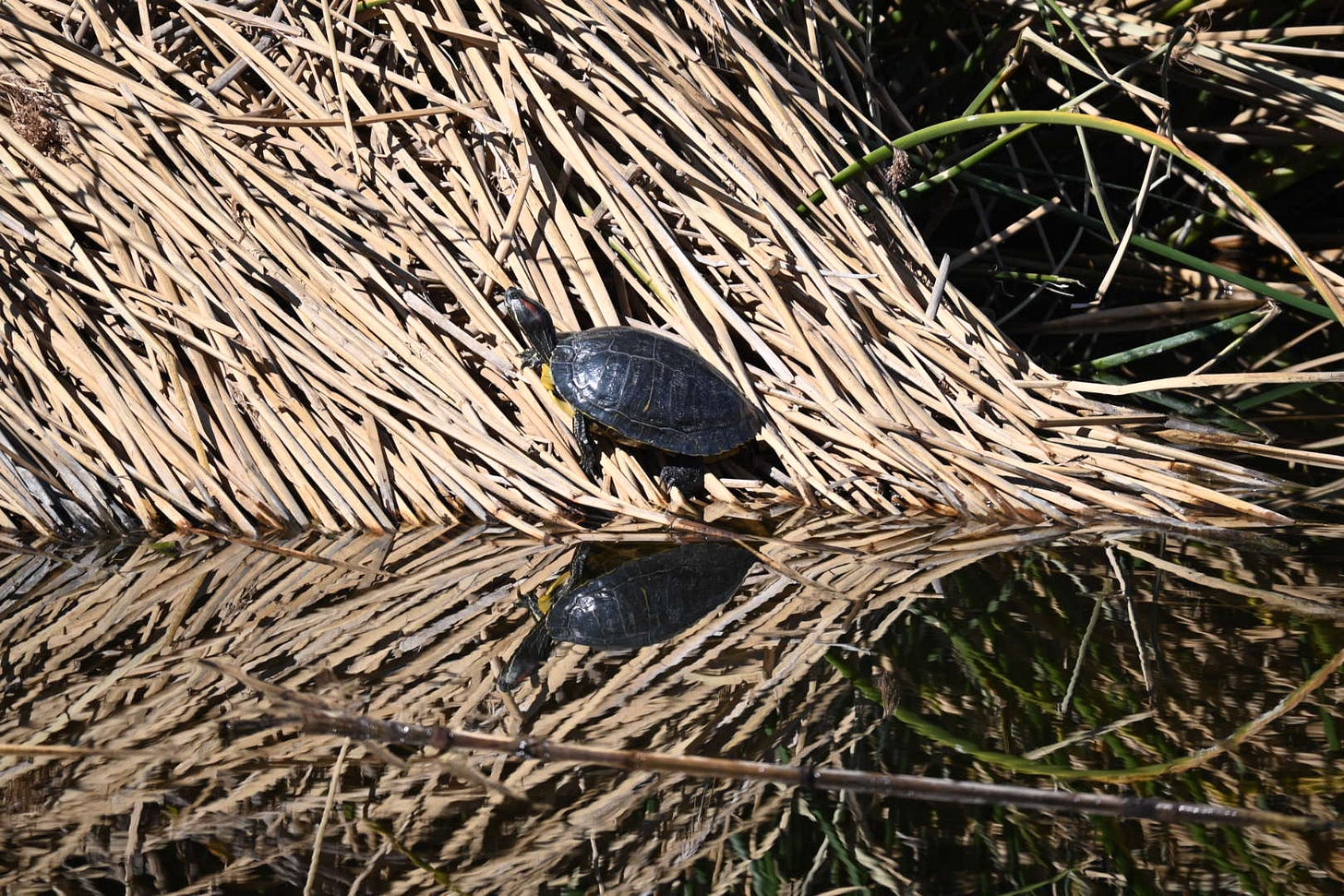
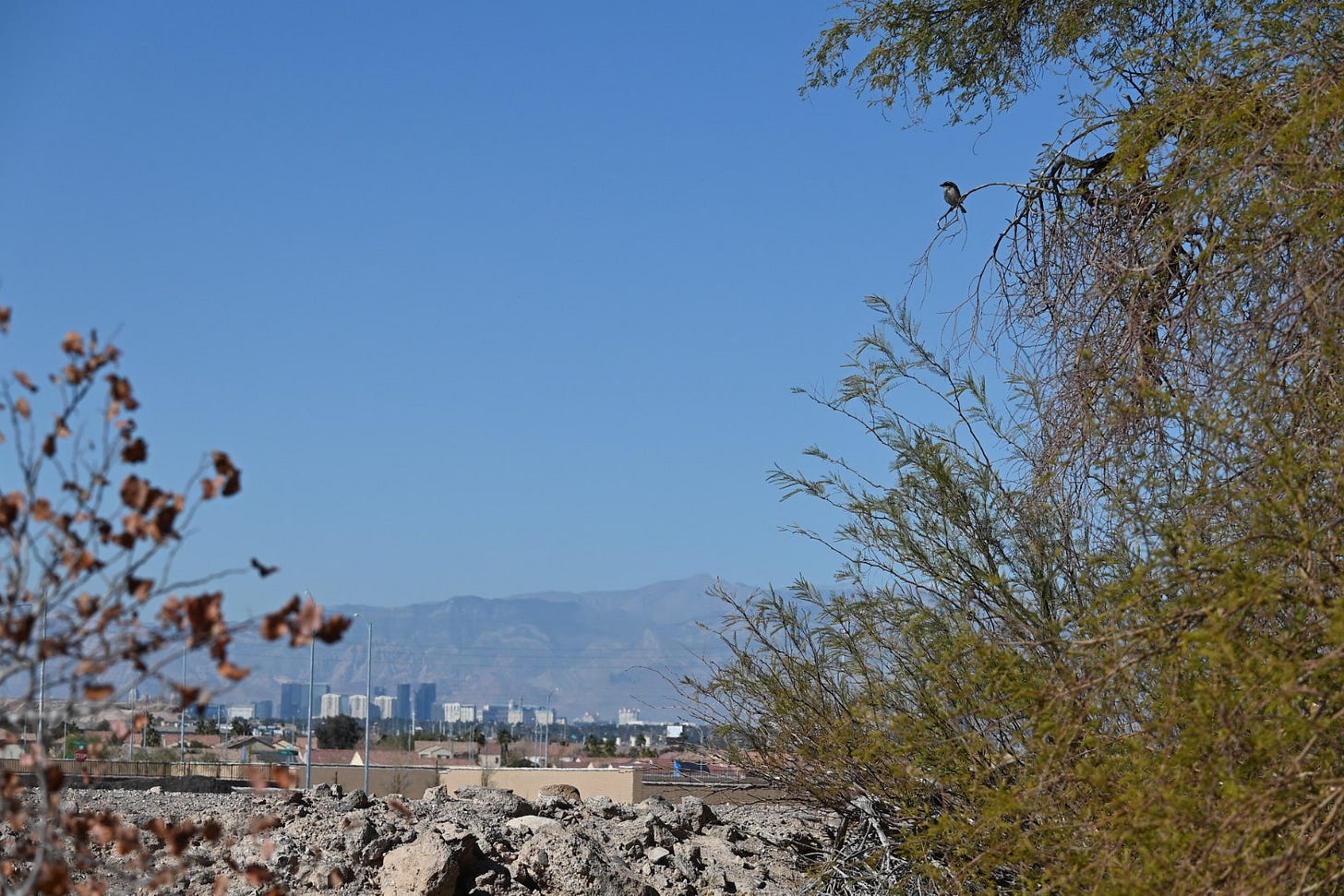
I admire your passion for saving the birds and humanity! If only more people would realize how important it is to stop destroying our environment and start preserving what we still have. Thank you for sharing so much information in your eloquent way. You always teach us so many new things and I love how it is all being tied back to education about the birds. Your photos are amazing!
WOW ! You captured my attention - your writing skills are excellent; and you have quite the talent for photography. I love that you spent your time in Las Vegas seeking out areas most tourists or visitors would never think of. Thank you for showing us another side of 'Sin City'. So many cities could take a lesson from their environmentalists. I'm looking forward to seeing what other 'hidden gems' you unveil to us.